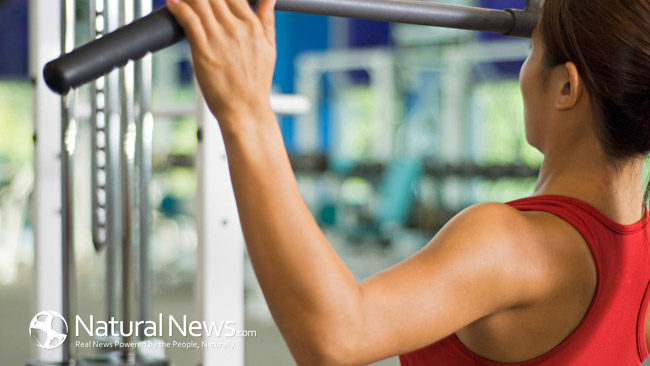A common misconception among women regarding strength training is that it will make them big and bulky – so they skip the weights and go straight to cardio instead. However, a study by Penn State found that people who combined cardio and weight training lost an average of 6 or more pounds than people who used only dieting or cardio alone. Even more impressive? While both of the other groups – dieting and cardio alone – lost both muscle and fat, the combined cardio/strength training group had only fat loss and retained all their muscle. Because muscle acts as a powerhouse for torching calories, muscle is the last thing you want to lose when you’re trying to drop pounds and become more toned. When most women think of lifting weights, they immediately think of the extreme physiques of women bodybuilders and shy away from any type of lifting. What they don’t realize is that women who look like that work hard to achieve that type of body – usually with a combination of supplements, specific diet guidelines, and very tailored weight training routines. For most of those women, it takes years to achieve that type of body and it isn’t something that comes just from lifting weights.
Women who avoid free weights or strength training machines at the gym or at home and only stick to the ellipticals, bikes, and treadmills are most likely hindering rather than helping their weight loss goals. Strength training has a variety of important benefits that complements almost all exercise routines and the Centers for Disease Control and Prevention recommend lifting weights at least twice a week to see results. For those who want to lift more frequently, there’s no harm as long as you give each muscle group two or three days to recover. In other words, make sure you’re rotating what areas of your body you work out whenever you hit the gym.
Besides maximizing your muscle tone, strength training has a number of other healthy benefits that should help women see it’s something to seek out rather than avoid. As mentioned earlier, women who work out and add strength training to their routine will lose, on average, 40 percent more fat than other methods alone. Because we tend to lose muscle between the ages of 30 and 50 and what’s lost is replaced by fat, these fat loss percentages are nothing to scoff at. Furthermore, strength training has been found to burn more calories than cardio alone. If you look at weight loss in its most simplified form, consuming more calories than you can burn off in a day means you will gain weight and vice versa for weight loss. Thanks to strength training, you will reap the calorie-burning benefits of your workout long after racking your weights and enjoy fast weight loss. If people who lift heavy seem like they are able to eat more while still maintaining a toned, lean look it’s because they can. Thanks to the after-burn effect of their weight lifting, they can consume more calories without worrying it will affect the scale negatively.
Besides looking better in your clothes and losing fat rather than muscle, strength training has a variety of other perks as well. Researchers found that people who strength train at least a few times a week are able to handle stress better, are more productive, and improve their cognitive function. Brazilian researchers have actually found that weight lifting can improve verbal reasoning, contribute to a longer attention span, and boost both short and long term memory. Furthermore, adding weights to your fitness routine a few times a week can also increase bone mineral density, lower the risk of developing diabetes, reduce high blood pressure, and improve joint flexibility.
Once you decide to add weight training to your fitness routine, there a few simple steps to keep in mind. First, try to find a gym that offers a free personal training session or two when you purchase a membership. This is a good way to gain some insight on how much you should lift and when, how often to rotate muscle groups, which machines are good for specific areas, and so on. Second, start slow and don’t overdo it; muscles tear when you first start working them out and need time to recover. That soreness you feel are the muscle fibers repairing themselves and working them out again too soon doesn’t let them heal properly. Third, if you have a question, don’t be afraid to ask. The people who work at the gym you choose are there for a reason so no matter how silly or obvious your question may seem, don’t be afraid to speak up.





